Electrical Safety Toolbox Talk – Quick & Easy [Updated for 2023]

This electrical safety toolbox talk will cover several topics your workers need to know about staying safe when working with electricity. When it comes to electrical safety, in many cases, you don’t get a second chance. One mistake, either from carelessness or inexperience, can lead to deadly results.
Accidents or electrocution can be prevented if you understand how electrical hazards work. This toolbox talk will give you the advice you need to help understand electrical safety and the steps workers should take to prevent electrical injury. Coupled with our video-based Arc Flash Training product, your employees can have a full suite of training to keep them safe at work.
Electrical Safety Requirements
Electricity, when properly harnessed and controlled, is one of the single most beneficial tools we have in hand. Electrical tools are a part of our everyday lives.
We reap the benefits of these power lines and electrical currents day in and day out. Being in the workforce in today’s world means dealing with electricity in all its forms. You likely work with an electrical energy source daily or even carry one.
With that said, safety with electricity is important. Thousands of people die from electrical injury or experience some form of electric shock. Mishandled or used carelessly, electricity can produce a deadly force.
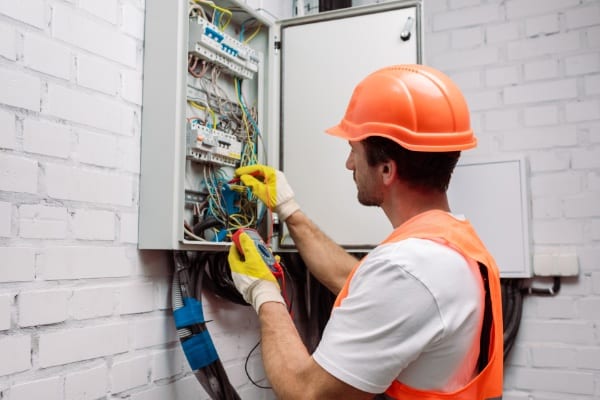
The 4 Main Types of Electrical Injuries
Electricity is a powerful force, and there are parts of your body that are more conducive than others. In addition, other bodily parts, like a resistor, can block an electrical current. (We have another article on the 5 Most Common Electrical Hazards that you can check out as well).
Electrical currents are attracted to bodily parts like your nerves. This makes sense, as your nerves act similarly to electrical sparks.
It can also travel quickly through the systems like the blood vessels. These bloodlines allow electricity to run through unbothered. But, interestingly enough, it does not travel through the bone very well.
There are four main types of injuries:
Encountering Electrocution
Electric shocks occur when an individual makes contact or is exposed to an electrical source like a wire and dies. This electrical source sends an electrical current through an individual.
Electrocution incidents are more severe, especially in an arc flash accident.
Electric Shock
People may think that electrocution and electric shock are the same, but there’s a crucial difference: whether you live to tell the tale.
Electric shock injuries also occur when an individual indirectly or directly comes into contact with an electrical energy source. This can send an electric current as a “shock” to the system. This jolt can radiate through the vessels and cause lingering damage.
Unlike electrocution, an electric shock does not immediately result in a fatality. However, these shocks, if serious, can result in paralytic or serious injuries that can be debilitating.
Experiencing a Burn from Electric Shock

A burn from shock can often be excruciating. This can lead to completely disfiguring or debilitating injuries. These injuries occur when electrical currents or sources enter or exit through the body.
These burns cause severe alterations to the body. This can be reflected through tears or the charring of the skin. But, it can also go beyond deep skin injury.
Certain thermal burns can cause damage to the internal organs. The internal tissues, arteries, organs, and veins can experience damage or disfigurement from the burns.
Falls & Forms of Brain Trauma
Workers suffering from an injury due to electricity can experience massive brain damage. They can also take a bad fall from these types of injuries as well.
If a worker on a ladder or elevated surface experiences electric shocks, they may lose control of their physicality and mental faculties. These falls can cause blunt force trauma to the head, causing severe damage.
The brain’s neural tissue is more vulnerable to electric shock. Since the brain is unable to resist the danger of electrical damage, it can cause neurological damage. Thus, neurological symptoms may appear in workers who encounter electrical sparks.
Serious brain trauma can manifest in workers as:
- Memory loss
- Depression
- Difficulties in performing tasks
- Loss of focus on worker’s tasks
- Irrational emotional reactions
AC vs. DC currents
An AC electrical current is far worse than a DC electrical current. DC strikes quickly and escapes. But, AC is alternating, meaning it can stiffen the body, which can perpetuate the damage.
When dealing with electrical hazards, it’s important to know the safety tips and the types of injuries you may encounter. The type of voltage can also indicate a potentially dangerous situation. Overhead or buried power lines are especially heinous when encountering electrocution.
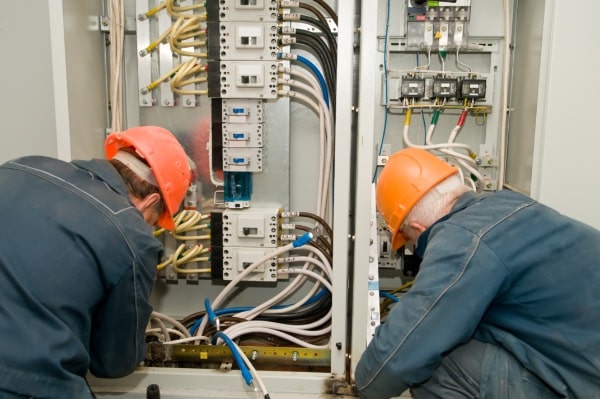
Electrical Safety Talking Points
Many workers encounter many hazards daily, such as exposed wires. Electrical hazards present unique risks and challenges to the workers in construction.
Since electricity is an unseen hazard, workers can underestimate the risks of any hazard from electricity present on the job site. It’s important to familiarize yourself with any risk or hazard involved on the job site.
Workers can understand the importance of safety and learn proper techniques to help mitigate risk. Qualified electricians must understand how to control any hazards on the job or construction site.
Common Electrical Hazard
Many common types of electrical hazards can occur on a construction site. However, when workers learn to identify an electrical hazard, the danger posed by electricity is minimized.
Here are some common incidents:
Contact with Power Lines: Contact with overhead or buried power lines, including other live electricity.
Lack of GFCI protection: A construction site may lack proper ground fault protection or may have an improper connection
Missing Grounding Path: This can refer to missing or discontinuous grounding paths. This can include equipment working on hot electrical or energized circuits. In addition, extension cords or power cords are improperly used.
A lineman worker can come into contact with high-voltage lines that are not double-insulated. Contact with these lines can be fatal. The most common cause of contact with these power lines comes from the use of conductive equipment.
These kinds of equipment can include:
- Aerial Lifts & Metal Building Materials
- Concrete Pump Trucks
- Raised Dump Truck Beds
- Cranes
- Backhoes
- Metal Ladder
- Raised Rough Terrain Forklifts
- High Scaffolding
Always survey the construction site and see if there’s any potential for contact between other equipment and overhead lines or buried lines. Take any live electricity into consideration, as it can cause severe damage upon contact with any kind of machinery.
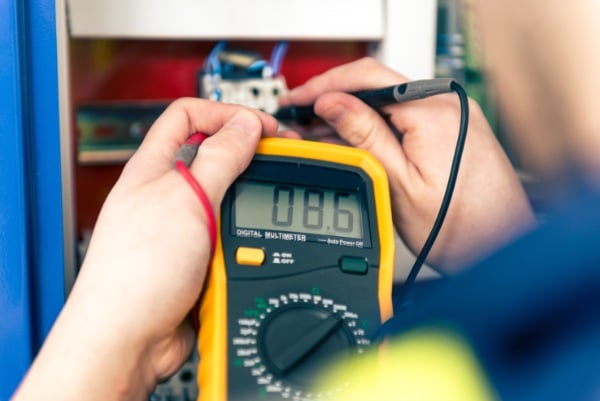
Underground Utilities
High voltage hazards can be deep in the ground. Line locations are required by law before any ground disturbance can continue. Always make a call before you dig.
Before beginning any kind of digging, make sure to talk to 8-1-1 and cross-reference any buried lines. You can also cross-check their website to gather further information. This can allow you to mark the exact location of underground utilities.
Occupational Health and Safety regulates minimum work distances in regard to electrical hazards at certain voltages. These clearances should be referred to before clearing any kind of work near high-voltage surfaces or sources.
Be aware of wiring details by marking the structure with flags or other painted markings. Avoid working near energized lines with any kind of conductive material.
Maintain a 10-foot clearance and wear PPE equipment near energized power lines. Any reported details are important when it comes to electrical safety.
Missing Cover Plates Posing As Electrical Hazards
Many live wire situations can lead to workers being exposed to electrical injury. Make sure to comb through the workplace to note any missing covers or lack of insulation.
Any abnormal material with exposed wires must be reported. Especially if you see anything exposed producing sparks, heat, smoke, or fire.
These are immediate cues that workers need to be extra careful in the area. The simple look, listen, and smell approach can help you solve these issues. You can sense or feel the radiating heat in the area as well.
This includes missing receptacle coverings or switched plates around an electrical outlet. It’s also important to note exposed circuit breakers. Outlet covers must be installed before activating an electrical source.
Extra precautions need to be used in these situations and must be immediately reported to any supervisors on the site.
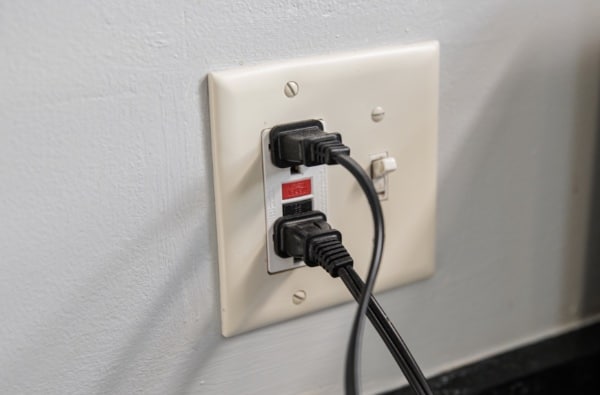
Ground Fault Protection & Extension Cords
The use of electrical equipment on construction sites can increase wear and tear on cabling and live wire. Damage to these power strips can lead to exposed wiring, damaged insulation, and short-circuiting.
To avoid hazards, keep items such as extension cords up to standard. Keep the cabling and wiring in good condition.
Without proper GFCI or cover, fires or electrical sparks can take place. These conditions can lead to what is known as a ground fault.
Electric burns, electric shock, or electrocution can occur from a ground fault. This can send a current through a worker’s body.
Use GFCI protection on 120-volt, 15, and 20-amp receptacles. Use properly grounded tools and double-insulated equipment. In toolbox talks, we always refer to the manufacturer’s instructions for proper usage.
Inspect all tools and pieces of equipment before working on the construction site. Proper use of an extension cord can help prevent tripping hazards and loose live wires.
Remove any tools or an extension cord that may pose hazards. This includes missing ground pins and damaged or cracked tool faces.
Missing or Discontinuous Path to Ground With Power Tools
Most electrical equipment has built-in safety features. Utilize these tips when dealing with power tools. If you do not use these tools as intended, it can cause a fire or an electrical current to run rampant.
Be extra careful when carrying any type of tool. Types of equipment misuse can include:
- Damaged or worn cabling: Any tools with worn or damaged insulation can create a hazard.
- Modified Cabling: Modified cords or tools missing faceplates, ground fins, or insulation can create unstable electricity.
- Fabricating extension cords: Fabricating an extension cord with ROMEX wiring
- Mounted boxes on the floor: Using junction boxes designed to be mounted with power cords being placed on the floor.
- Improper outdoor use: Using tools outdoors when they were only designed for indoor use
Three Wire Extension Cords
All machinery and devices must meet approved OSHA electrical standards. These types of machinery should reflect the manufacturer’s specifications.
Exposed wires and live parts while working create a hazardous environment. Never work around any exposed wires. These are extremely dangerous situations that cause thermal burns.
Never work on energized or “hot” electrical circuit breakers until all power is shut off or deactivated. Access to a lockout tag system is a great example of how to help coordinate workers.
These systems can help protect workers from an accidental or unexpected startup of electrical machinery. It can also help prevent a fire or other danger.
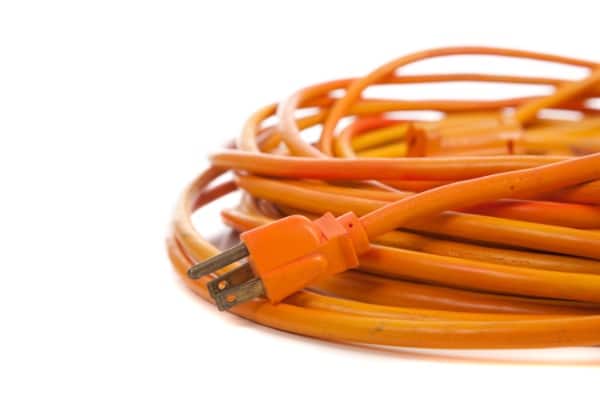
Electrical Hazards Analysis
If you are in contact with a live or energized material, an electrical hazard analysis must be conducted. The National Fire Protection Association 70E articles must be followed.
The risk of shock can be mitigated without incident. Safety begins with the proper use of field-level hazard assessment and identifying potential dangers. Performing a simple walkthrough can help you prepare for a workday.
PPE Requirements
Common PPE requirements include cotton or fire-resistant material. Wearing cotton or fire-resistant pants and a shirt with a minimum of six inches to full-length sleeves can help you avoid fires.
Electric shocks or static-dissipative footwear can block or reduce potential injury. Type one or two Class E protective headwear can also help prevent contact.
You’ll want to arm workers to carry high-visibility clothing, work gloves, and safety glasses.
Electric workers working around energized machinery should be aware of CSA standards Z462. Along with NFPA 70E, CSA Z462 identifies hazards associated with electrical sources and teaches workers how to protect themselves from electrical injury. It also covers any additional PPE required for certain services.
For example, arc flash clothing may be required in certain environments. This includes an arc flash face shield and rubber-insulated gloves, including leather protection to help reduce conductivity.
Toolbox Talk Conclusion – Protect Yourself Against Electrical Danger
Electrical work can be a daunting task for anyone involved, but the right precautions can help prevent incidents. Proper PPE clothing, situational awareness, and wiring kept in good condition can help protect everyone in the workplace.
Following these practices can help alleviate the danger and keep you working safely. If you have any questions or concerns, always contact a supervisor. Reviewing this electrical safety toolbox talk information with your work crew will help keep everyone informed and ready for work.
